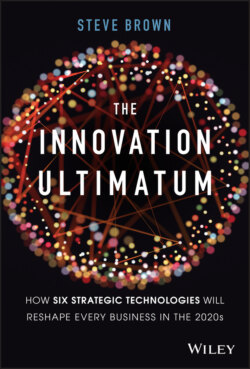Читать книгу The Innovation Ultimatum - Steve Brown - Страница 31
Natural Language Generation (NLG)
ОглавлениеComputers with the ability to write or speak in natural human language are a huge breakthrough. AIs generate language either from source data or from source text. For example, an auto-generated weather report is created from weather forecast data, while a translation from one language to another is performed based on source text.
Natural language generation (NLG) has many valuable business applications. Language translation is an obvious one. Another is the automatic creation of summaries and abstracts. These might be summaries of financial reports, legal documents, operations reports, performance reviews, news articles, or medical records. NLG is combined with image recognition to automatically caption or describe images. This is a valuable function for people with visual impairment and also improves the quality of image searches.
In March 2014, the Los Angeles Times published a short story on an earthquake in Beverly Hills, California. The article described the location, time, and strength of the earthquake (4.4 on the Richter scale, if you're interested) and posted it to the L.A. Times website within three minutes of the earthquake. The article was written by a simple piece of software that sourced seismic data from the U.S. Geological Survey. This simple automation populated data into a prewritten template but demonstrates the power of automation. In a world of 24-hour news cycles and shrinking ad revenue, NLG frees human reporters to focus on higher-value stories and investigative journalism. More advanced automation now writes weather and traffic reports, summarizes business results, and covers sports events. Wordsmith, an automated reporting platform used by the Associated Press (AP), uses NLG to generate stories about minor league baseball games, college basketball, and quarterly corporate earnings reports. The AP claims that Wordsmith produces more than 4,400 corporate recaps each quarter, more than 15 times the number it could previously handle using a human writing staff. Wordsmith offers a glimpse of the more sophisticated NLG capabilities coming in the near future.
Simplish uses AI to convert complex text, with a vocabulary of more than 100,000 words, into simpler text with a vocabulary of less than 2,000 words. NLG will make complex language accessible to broader audiences with lower levels of education, for example, an academic text translated for lay people or children. Future NLP applications might provide comprehensive copyediting services or disrupt the businesses of companies like CliffsNotes.
Quillionz uses AI to automatically generate questions, quizzes, and assessments from a body of text. This provides an amazing aid for teachers, who can guide the AI to focus on particular keyword topics and automatically create multiple-choice questions.
There is a dark side to NLG technology. If we think that online fake news is a problem now, just wait until next-generation NLG is unleashed by the Russian troll farms. A human troll farm might create a hundred fake “news” articles in a day; a weaponized AI could pump out a million pieces of disinformation in a single hour. OpenAI claims to have created NLG software that writes such high-quality text that they have chosen to withhold its release, based on such concerns.
A 2015 survey of 352 leading AI experts by the University of Oxford predicted that AI will translate languages better than human translators by 2024, will write high-school-level essays by 2026, but won't write a best-selling novel until 2049. It's a giant leap from teenage essays to Tolkein, but the direction is clear. While we are a long way from the first Pulitzer Prize–winning novel written by AI, sophisticated NLG technology will soon create complex documents that rival human output.
